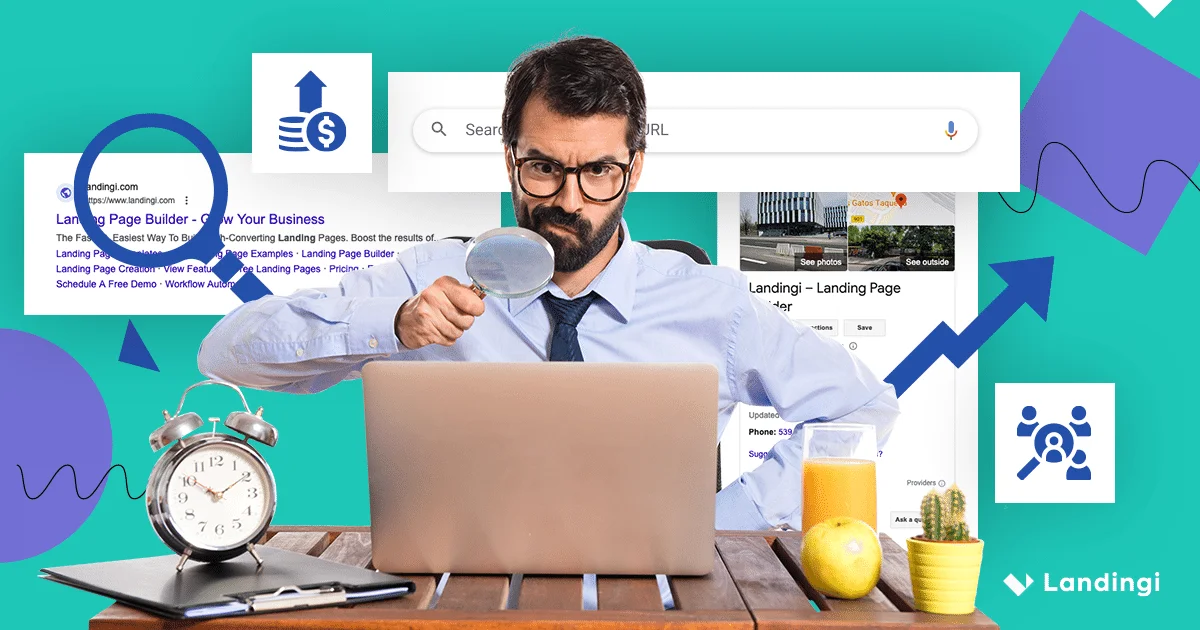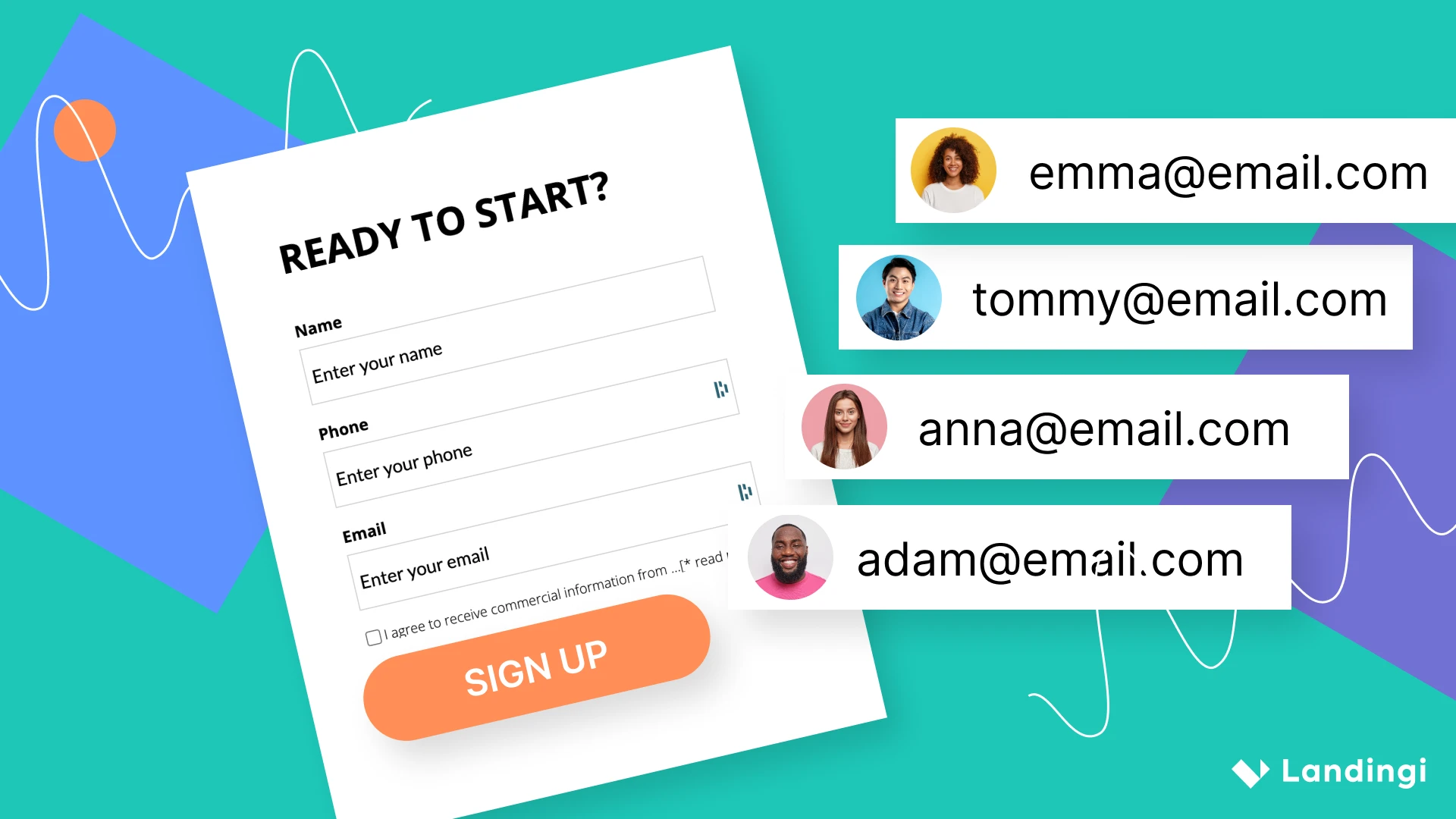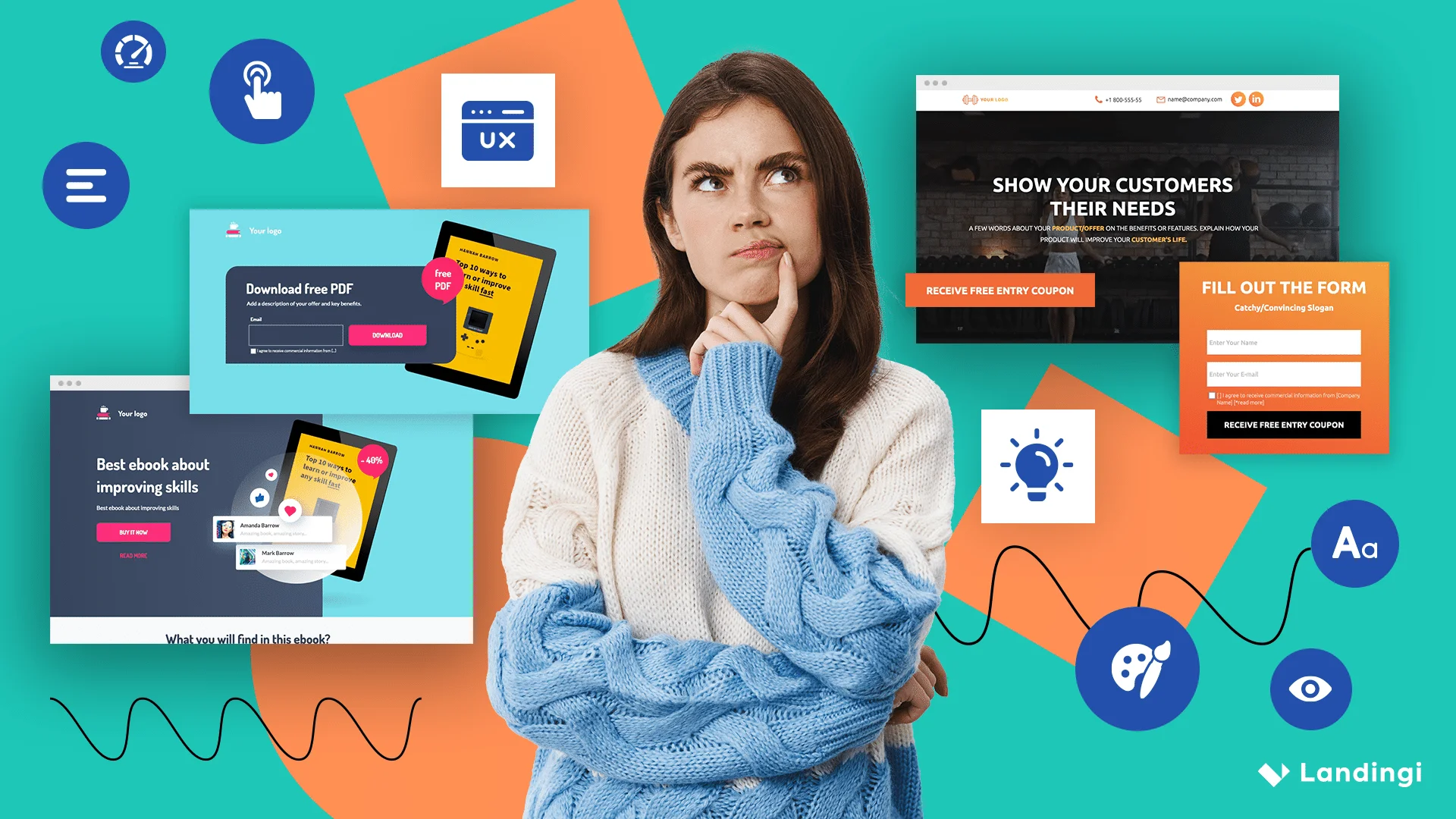While SEO brings visitors to your doorstep, CRO invites them in and makes them stay. This blog post explores the often-overlooked synergy between these two crucial elements of digital marketing, demonstrating how they can work together to achieve remarkable results.
We explore this interplay through five distinct examples, illustrating how CRO can be skillfully woven into SEO campaigns. These case studies will provide actionable insights and underscore the significance of applying the best SEO CRO practices for your overall business outcomes.
Let’s jump right in!
Make your sections smartable and let go of mundane manual tasks with Smart Sections! An easy way to manage bulk changes.
What is Conversion Rate Optimization?
Conversion Rate Optimization (CRO) is a strategic process aimed at increasing the number of visitors who take a desired action on your website. This could be anything from making a purchase, signing up for a newsletter, to filling out a contact form. The goal of CRO is to make your website more effective in achieving its business objectives by understanding and responding to user behavior.
This optimization process involves a variety of techniques, such as analyzing user behavior through analytics, conducting A/B testing to experiment with different web page layouts, and continuously seeking user feedback. By refining the website based on this data, CRO enhances the user experience and directly contributes to improving conversion rates.
What is Conversion Rate Optimization in SEO?
In SEO, conversion rate optimization refers to improving the efficiency of SEO strategy, that is more impressions and clicks brought to your site, increasing the quality of traffic (measured, for example, by the number of website visitors making further conversions like purchases, form fills, subscriptions, etc.), or achieving higher positions in the search engine results pages (SERPs).
Why is it Important to Optimize SEO Conversion Rate?
Optimizing the SEO conversion rate is crucial because it directly impacts the return on investment (ROI) from your SEO efforts, ensuring that the traffic driven to your website contributes meaningfully to your business goals. Beyond attracting visitors, it’s about making the most of that traffic.
The primary aim of SEO is to increase the visibility of your website in search engine results, leading to higher traffic. However, if this traffic doesn’t convert into actual sales, leads, or other desired actions, the effectiveness of your SEO efforts remains limited. Here’s where optimizing the conversion rate becomes vital. It bridges the gap between traffic acquisition and actual business results.
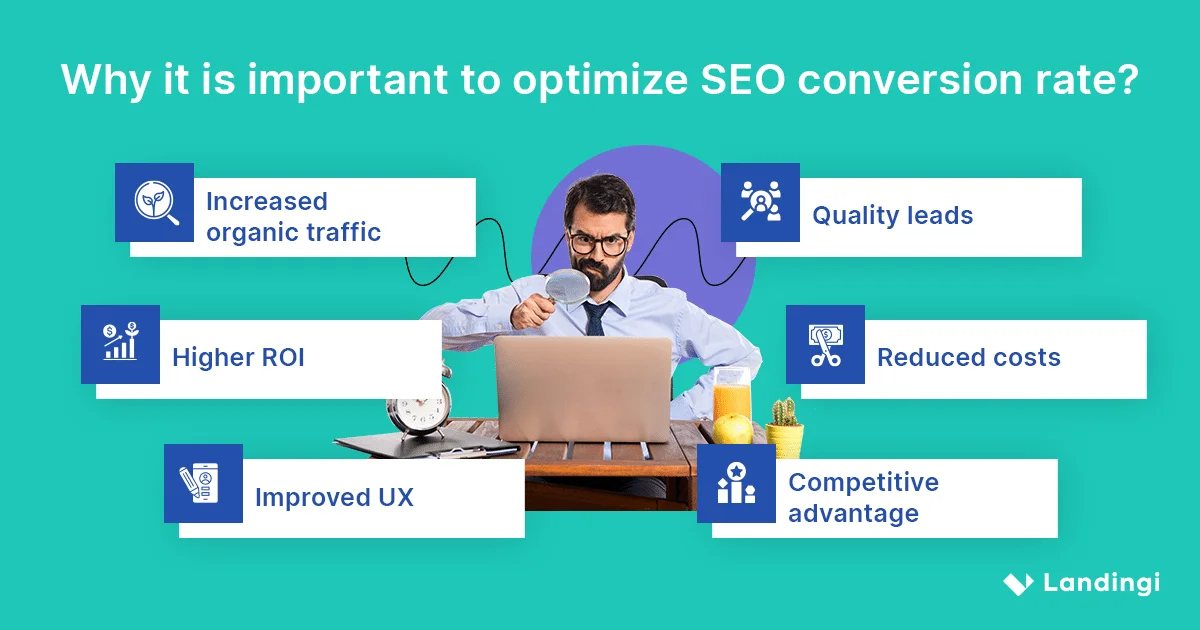
How to Increase Conversion Rate with SEO?
Increasing the conversion rate with SEO involves a strategic blend of tactics related to your website’s content, keywords, speed, visuals, UX, etc., that enhance both its visibility and usability. The goal is to ensure that the traffic is relevant and more likely to convert.
Let’s list and inspect a few essential tips for improving CR with SEO.
1. Use Targeted Keywords
Incorporate keywords that match the user’s search intent. Understanding whether your audience is looking for information or making a purchase decision and tailoring your content accordingly can significantly increase the chances of conversions.
2. Create High-Quality, Relevant Content
Content that addresses the specific needs and questions of your target audience can attract the right kind of traffic. High-quality, informative, and engaging content not only ranks well but also establishes trust, which is crucial for conversions.
3. Optimize for Mobile Users
With the increasing prevalence of mobile internet usage, ensure your website is mobile-friendly. A responsive design that adapts to different screen sizes can greatly enhance the user experience for mobile users and, in turn, boost conversions.
4. Improve Page Load Speed
A fast-loading website is essential for good UX and SEO. Slow page load times can lead to higher bounce rates and lost conversion opportunities. Furthermore, page speed influences a website’s ranking, with faster sites typically earning better positions in search results due to improved user satisfaction.
5. Conduct A/B Testing
Regularly test different elements of your SEO strategy to see what implies the best results and more SEO conversions (e.g. more traffic, more top 10 positions for relevant phrases in SERPs, more sites appearing in Google’s “People Also Ask” section, etc.).
6. Analyze and Adapt
Use analytics tools to track user behavior on your site. Understanding how users interact with your site can reveal valuable insights for optimizing pages for higher conversion rates.
Pro-Tip: For optimizing a website’s conversion rate, the use of Google Analytics should be most beneficial, while for landing pages, nothing tops the Event Tracker.
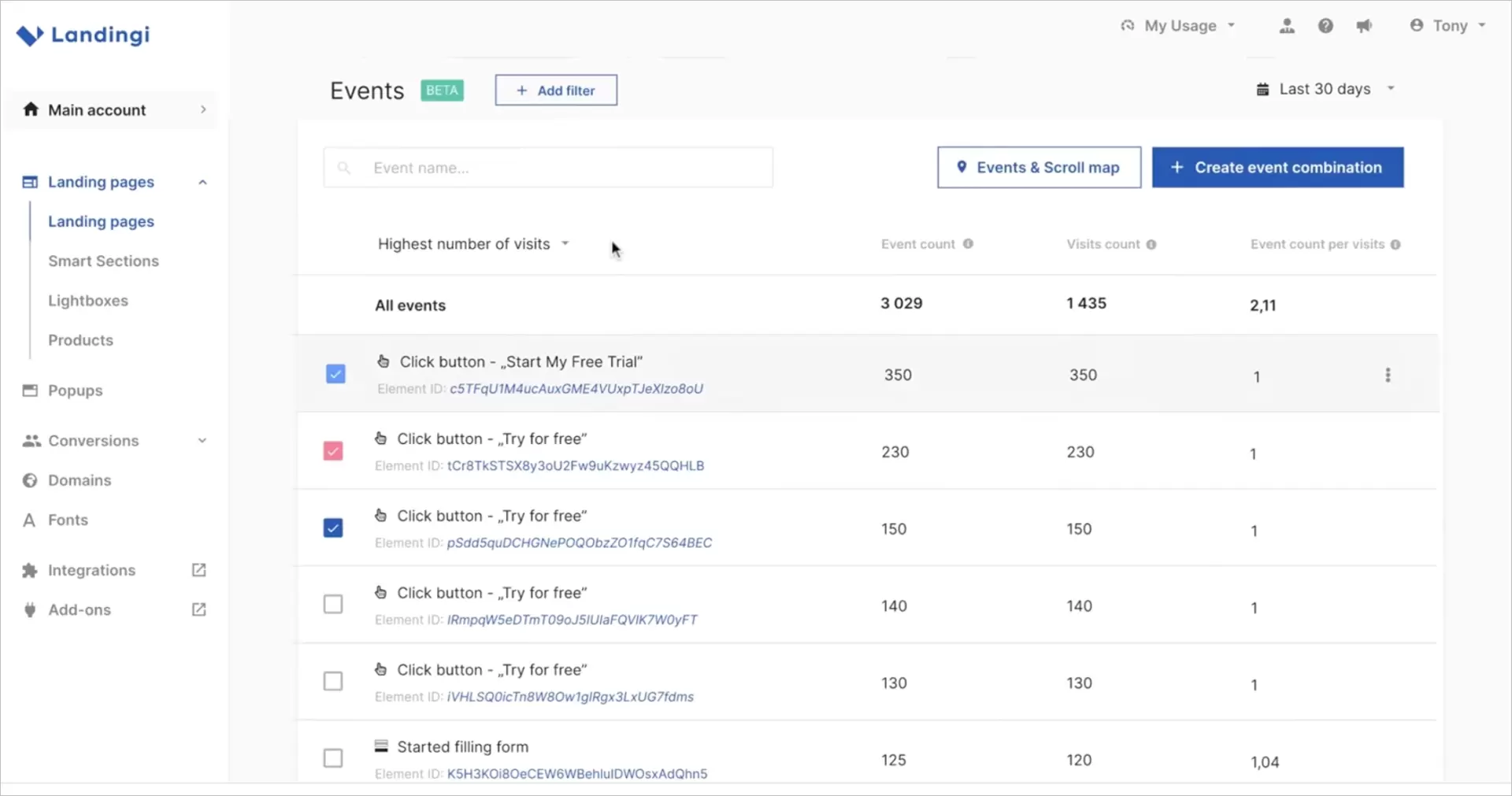
7. Track Competitor Strategies
Learn from successful competitors to identify opportunities for improvement. Examine their digital marketing strategy step by step. Check out:
- how their marketing teams work,
- their site speed and technical SEO performance,
- how they organize the conversion funnel,
- how they acquire the organic traffic,
- which conversion rate optimization tools they are using.
8. Utilize Landing Pages
Create specific landing pages for different audience segments or campaigns. Then, your traffic will be not only wider but also properly targeted, ensuring each user lands on the appropriate page, which typically translates to more conversions.
How can I Improve my SEO Conversion?
To improve your SEO conversion, perform search engine optimization by selecting appropriate keywords, adjusting title tags and meta descriptions, crafting unique and relevant content, optimizing images, creating a well-thought-out site architecture with a sitemap, regularly updating webpage resources, acquiring quality backlinks and organizing properly internal linking structure.
The length of this list might be a bit daunting, but this is exactly how the highest-converting pages work. Addressing at least a few of these issues will undoubtedly reflect in increasing CR, which, in turn, allows you to reduce customer acquisition costs and boost revenue.
How to Optimize SEO Conversion Rate on Landing Page?
SEO conversion optimization efforts on landing pages come down to making it visible in the SERPs and driving valuable traffic by creating content relevant to the audience, taking care of meaningful metadescription and alts for images, preparing compelling visuals able to pertain visitors on site as long as possible, and increasing engagement metrics with properly arranged UX flow.
If users find on your pages what they are seeking, they probably spend some time exploring, and thus they are more likely to convert. This is one of the most important signals for search engines that confirm it’s credible and of appropriate quality. Such classified it has more chances to appear in the high search engine results page (fortunately, on the first page within the desirable TOP 10).
Pro-Tip: Find out how to AI-generate SEO fundamentals for your landing pages in Landingi.
How do you Calculate SEO Conversion Rate?
To calculate the SEO conversion rate, you can follow this simple formula, where SEO CR is a relation between the number of conversions from SEO traffic and the total number of visitors acquired with SEO efforts.
SEO Conversion Rate = (Number of Conversions from SEO Traffic / Total Number of Visitors from SEO) x 100
What is the average conversion rate measured that way? It depends on the industry and the page type. For example, according to HigherVisibility (A. Heitzman, 30+ SEO and Website Conversion Stats: Why SEO Leads to More Sales on Your Site, 2023), the average CR for E-Commerce sites is about 2.5-3%. FirstPageSage provides more detailed data for SEO CRs across different page types:
Page type | Average SEO CR |
Product Landing Page | 2.9% |
Service Landing Page | 2.7% |
Application Landing Page | 3.1% |
Location Landing Page | 1.1% |
Industry Landing Page | 1.8% |
Case Study | 3.5% |
Problem & Solution / FAQ Page | 2.7% |
Thought Leadership Article or Blog Post | 2.0% |
Hub Page | 2.5% |
White Paper | 4.6% |
Elaborated with data provided by Evan Bailyn (Average SEO Conversion Rate By Page Type, 2023).
Here’s how to calculate conversion rate in SEO step-by-step:
- Identify Conversions: First, define what constitutes a conversion for your website. This could be a sale, a sign-up, a download, or any other action you consider valuable.
- Track SEO Traffic: Use analytics tools like Google Analytics to track the number of visitors to your website from organic search. This is your SEO traffic.
- Count Conversions from SEO Traffic: Determine the number of these visitors who completed the defined conversion action. This can also be tracked using Google Analytics, where you can segment conversions by traffic source.
- Calculate the Conversion Rate: Divide the number of conversions from SEO traffic by the total number of SEO visitors, then multiply by 100 to convert it into a percentage.
For example, if your website received 5,000 visitors from organic search in a month and 100 of them made a purchase (conversion), your SEO conversion rate would be:
SEO CR = (100 / 5000 ) x 100 = 2%
This calculation gives you the percentage of your organic search visitors who are converting, providing a clear metric to gauge the effectiveness of your SEO strategy in driving not just traffic, but valuable actions on your website.
Info: In case you are solely interested in visibility and the amount of traffic on your site, you may define conversion as your page’s impressions in search results or its entry from SERPs. Then, the SEO CR formula should be appropriately modified. For instance, you can compare the number of impressions and entries in different periods (week to week, month to month, etc.).
Get 111 Landing Page Examples—The Ultimate Guide for FREE
What is Good Conversion Rate in SEO?
Good conversion rate is over 3.5% in B2C and over 4% in B2B businesses. We may take such values based on the average conversion data for these categories provided by the FirstPageSage (E. Bailyn, Average SEO Conversion…). According to it, the average conversion rate for B2C is 2.1% and 2.6% in B2B. Everything surpassing those numbers can be considered at least a decent result.
What is Bad Conversion Rate in SEO?
In both B2B and B2C SEO, conversion rates far under 2% can be considered bad, while CR values up to 1 are extremely bad. They are clear signals that acquired web traffic is of low quality or something on your page doesn’t work properly. It means your SEO strategy needs significant improvements.
5 Examples of CRO in SEO
Now, let’s examine how this works in practice. Find below 5 examples of SEO CRO that yielded the expected results for renowned companies. A quick overview of what we’ve analyzed is in the table below.
SEO CRO Case | Company |
Landing Pages | Wise |
E-Commerce | Manyavar |
Mobile | Walmart |
Affiliate Website | RTINGS |
Blog | Aden + Anais |
1. SEO CRO for Landing Page: Wise
Wise.com, formerly known as TransferWise, is a financial technology company that offers online money transfer services, providing a cost-effective and transparent way to send money internationally.
In October 2023, 60.88 visited their page, which is an increase from 57.64M in the previous month and 50.48M in August (stats by Semrush).
Their keyword research confirmed that they need thousands of landing pages. Easy to say, but how to deal with it?

Templates and Programmatic Sections
They used landing page templates combined with programmatic SEO. For instance, M. Pecánek checked that they have tens of thousands of landing pages about swift code combinations aimed at US visitors (Wise.com SEO Case Study: 5 Reasons Why Their SEO Rocks, 2021). The same goes for currencies. These top-of-the-conversion-funnel pages bring most of their outstanding traffic amount.
Its landing pages consist of programmatic sections with changing variables and values. They are embedded into the same section template with the same structure, copy, buttons and so on. Below, you can see how it looks in order to sending money exchanged from one currency to another.
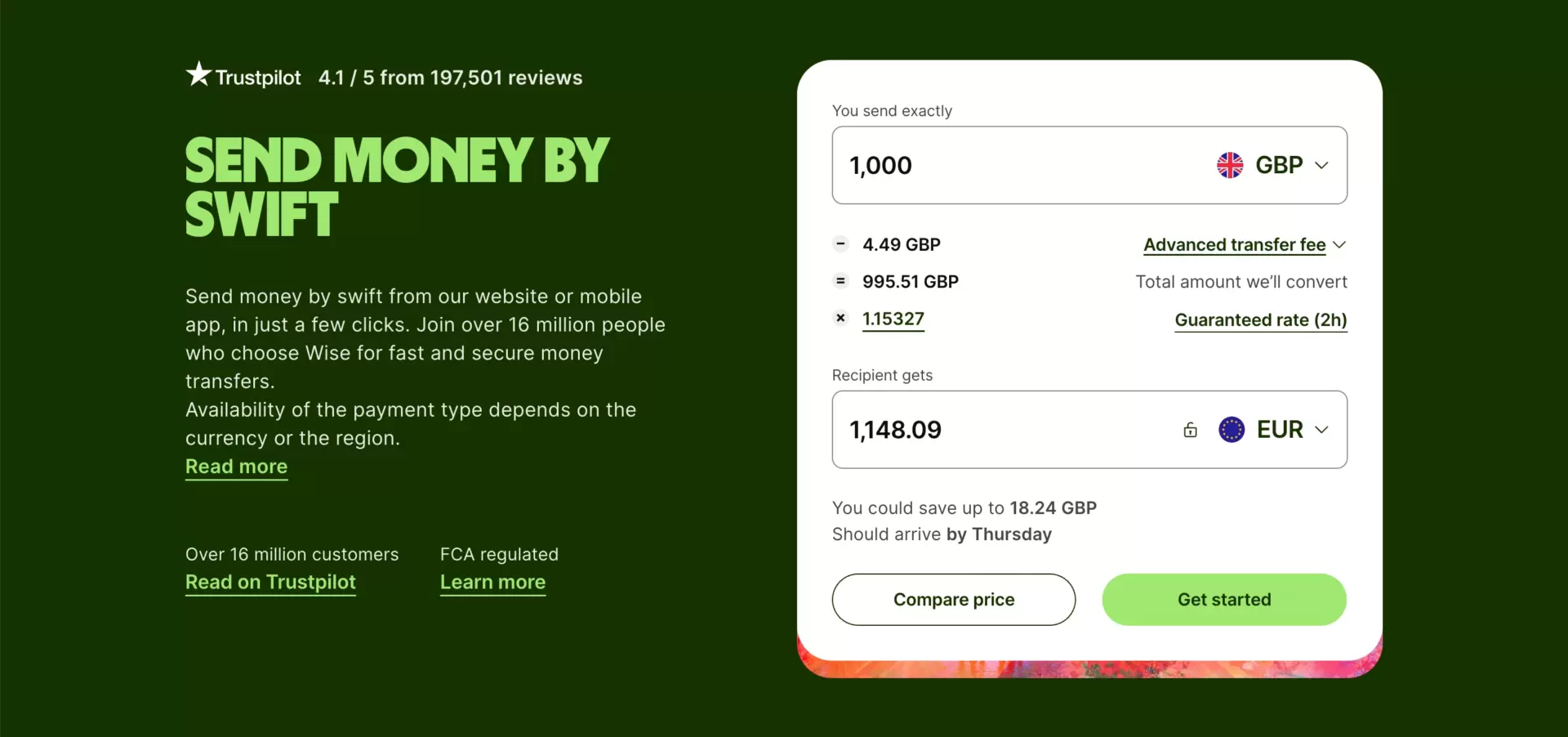
Pro-Tip: To create programmatic content on a scale without coding or technical skills, you may use landing page builders equipped with this feature. Check out how to craft programmatic content in Landingi.
FAQs and Q&As
Another good point is including on their pages direct answers to users’ queries. Questions are selected for the relevant phrases to meet the search intent and give users exactly what they are looking for. They do it in two ways. Firstly, via placing relevant questions in separate sections like the one below:

Secondly by Q&A panels placed at the bottom of the page:
That way, they acquire impressive traffic volume and ensure that it’s of quality. The latter means website visitors may be interested in the product, so they can be considered potential customers.
Finally, it’s noteworthy that they optimize content to appear in Google’s Featured Snippets, which usually give a boost of additional traffic and increase overall brand awareness.
2. SEO CRO for E-commerce: Manyavar
Manyavar is one of the most serious players in the India wedding wear market. In 2020, the company expanded across over 200 cities in the country and launched their online store.
The goals set for the agency performing the optimization (Infidigit) were to improve organic rank, increase clicks and shares, and bring more sessions finalized with conversion. Given the overcrowded online market for traditional clothing, Manyavar aimed to achieve top 5 rank positions for highly competitive keywords like “Wedding Dresses for Men”, “Sherwani”, and “Kurta Jacket”.
Which actions proved to be successful?
- Numerous site structure improvements to ensure Google bots crawl the page properly and only relevant pages are crawled (which prevents from blowing the crawl budget).
- Re-structuring on-page internal linking scheme.
- Moving the navigation bar to the top.
- Crafting content ranking for more non-brand keywords.
- Creating landing pages based on upcoming brand-related events.
Results reported by Infidigit (How Infidigit helped Manyavar to rank for competitive keywords & increased ranking by 55%) were as follows:
- Increased organic rankings in Top 1 Positions by 610%
- Increased organic rankings in Top 5 Positions by 55%
- Increased organic click share by 51%.
These numbers quickly translated into increasing the site’s conversion rate.

3. SEO CRO for Mobile apps: Walmart
There’s no need to introduce the company, as we are dealing with a business giant.
They grappled with the question of how to increase conversions on mobile devices. Their previous layout was designed for desktop website visitors, so this time, all the conversion rate optimization efforts were focused on mobile users.
The mobile view was generally rebuilt to increase the browsing experience. As noted by Noah Digital (10 Amazing Conversion Rate Optimization Case Studies For E-Commerce), the new version allowed users to search for desired products faster and was overall more user-friendly. They also refreshed the design to remove a few pain points preventing users from making a purchase.
This simple conversion rate optimization increased conversion percentages by 20 points. Simultaneously, mobile orders saw a rise of 98%!
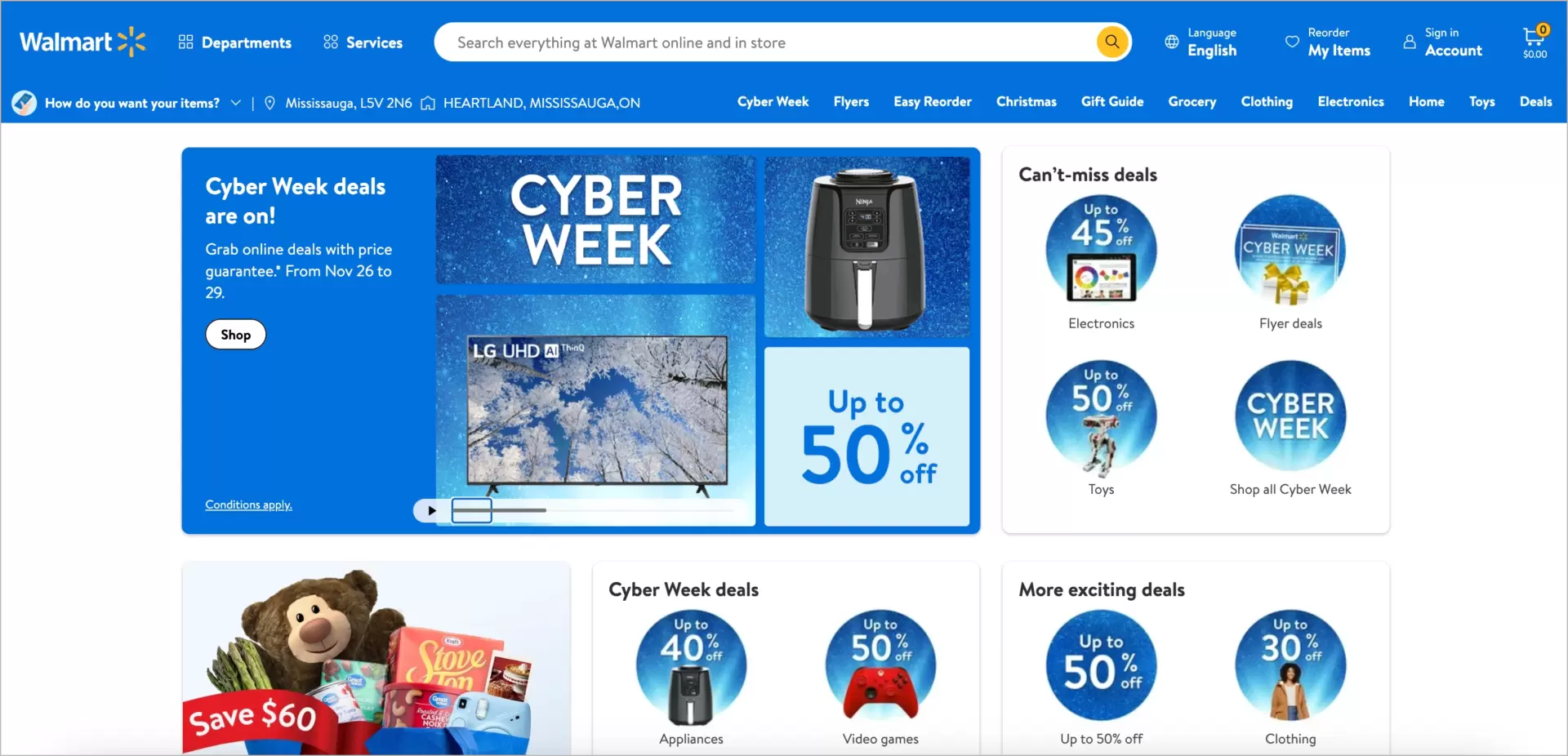
4. SEO CRO for Affiliate website: RTINGS
Rtings.com is a website that provides detailed and unbiased reviews of consumer electronics, particularly focusing on TVs, monitors, headphones, and soundbars. They use standardized and scientific testing methods to evaluate products, offering comprehensive comparisons and buying guides to help consumers make informed purchasing decisions.
This site secures a high position for general, widely-searched keywords like ‘tv,’ with a monthly search volume of approximately 462K in the U.S. In October 2023, rtings.com received 31.47M visits! What are the milestones of their SEO conversion rate optimization strategy?
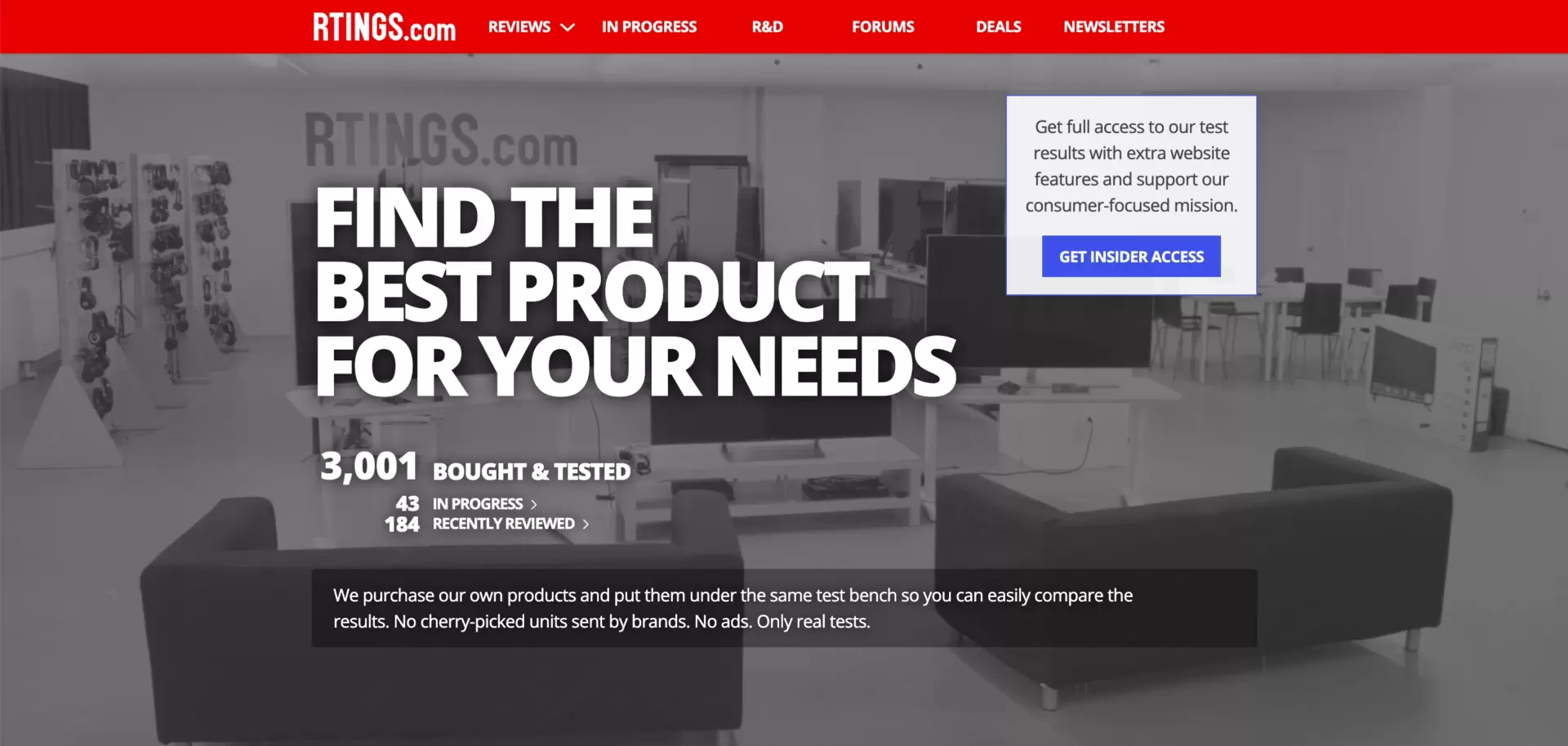
Perfected Site Structure
First of all, they nailed their website structure. It’s not easy if you have over 20K indexed pages! According to Ahrefs (H. Gupta, How RTINGS.com Dominates Product Niches (SEO Case Study), 2022) their articles can be classified to four categories:
- product reviews,
- “best of” posts,
- informational articles,
- comparisons.
They have organized it clearly with folders and myriads of subfolders with consistent URL mapping, so this labyrinth is paradoxically easy to navigate and crawl by search engines.
Each “best by” (e.g. TV best by size, price, etc.) page has a separate URL and can be filled with targeted keywords to reach a specific audience.
Programmatic SEO
The second milestone is the use of programmatic SEO, that is, the automated creation of numerous web pages optimized for search engines, using data and templates to target a wide range of keywords efficiently.
They, of course, couldn’t create thousands of pages manually, so they automatized the process where possible. The best examples are comparisons, where one structure is applied to loads of products. “Vs”, “Side-by-Side” and the names of categories are elements that don’t change on various pages but are instead automatically populated with specific data regarding product parameters.
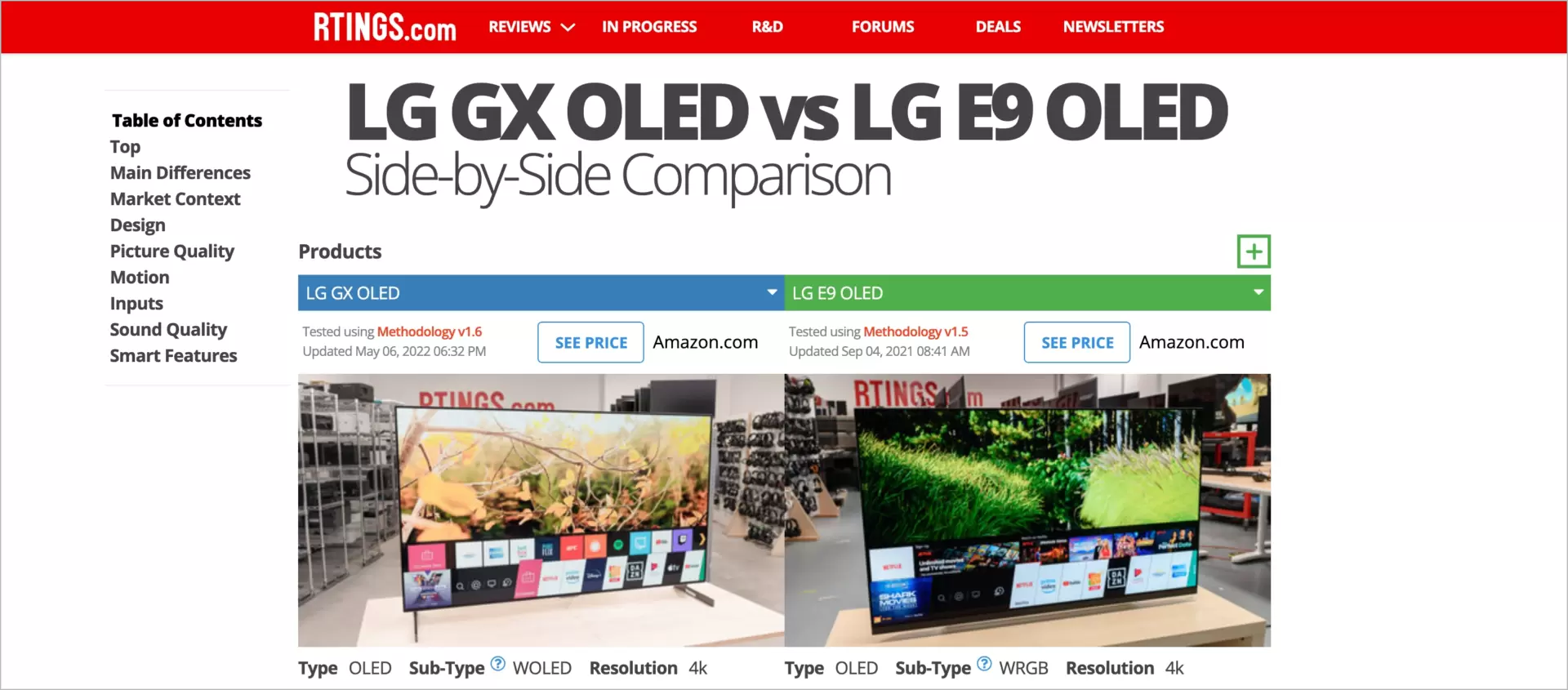
Use of Numerous Channels
I mean here, especially their YouTube account, which not only brings additional traffic but also serves link-building purposes. Their video reviews are enriched with extensive descriptions linking to their website and social media profiles.
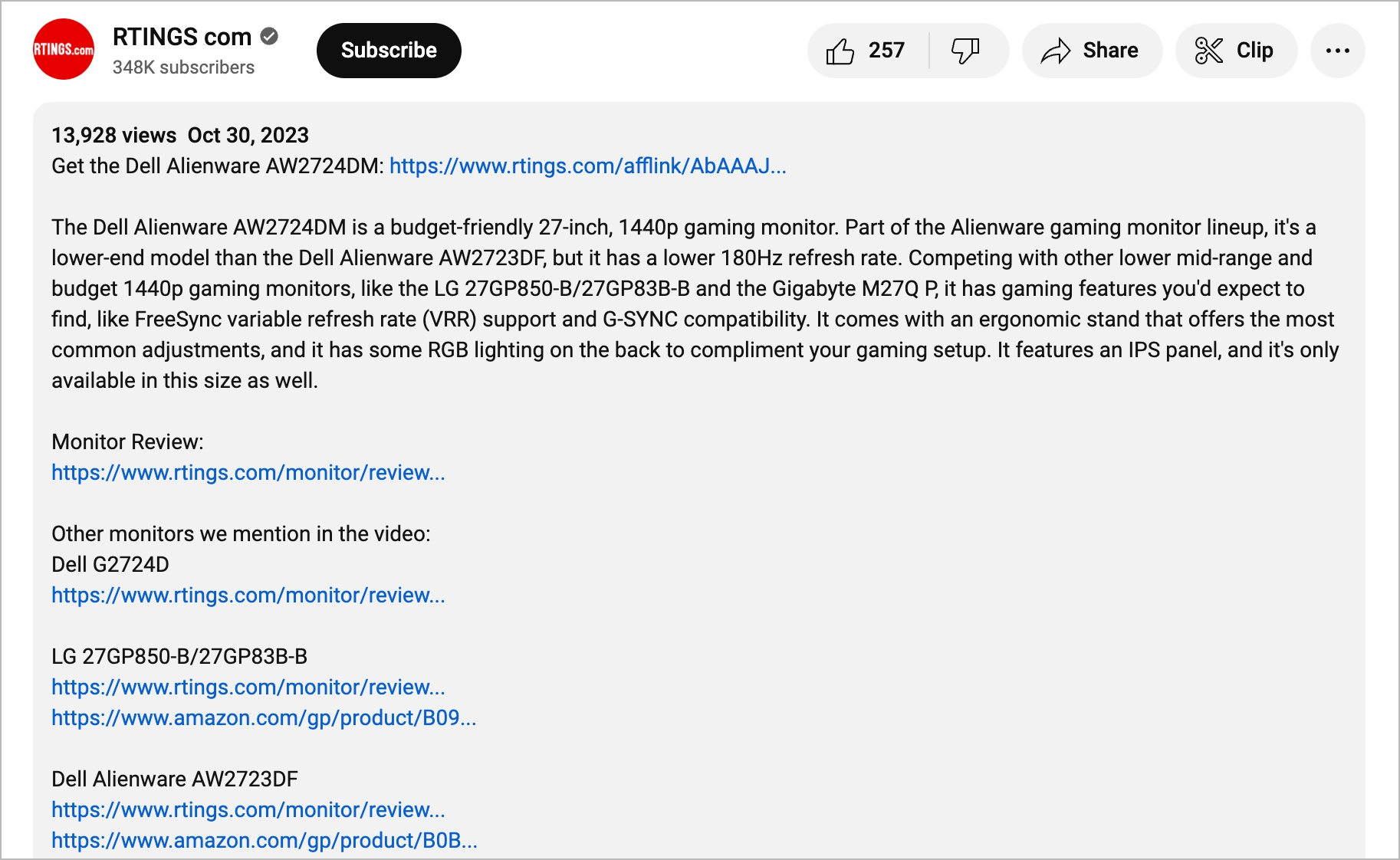
5. SEO CRO for Blogs: Aden + Anais
Aden + Anais company is a company that specializes in baby and toddler products, particularly known for their muslin swaddle blankets, sleepwear, and other baby essentials
In their case, the key to success turned out to be blog optimization combined with changing the site’s navigation and rewriting some product pages. All of this resulted in:
- +63% in revenue (United States),
- +82% transactions (France),
- +153% CTR (United Kingdom),
- +418% transactions (Germany),
- +42% CTR (United States),
- +345% revenue (Germany).
According to Scandiweb agency responsible for SEO improvements and conversion optimization tweaks, such superb outcomes were possible due to the following practices.

New Design
Scandiweb undertook a blog makeover, prioritizing UX improvements and increasing conversions. They enriched blogposts with product listings, eye-catching CTA buttons, and well-thought-out internal links.
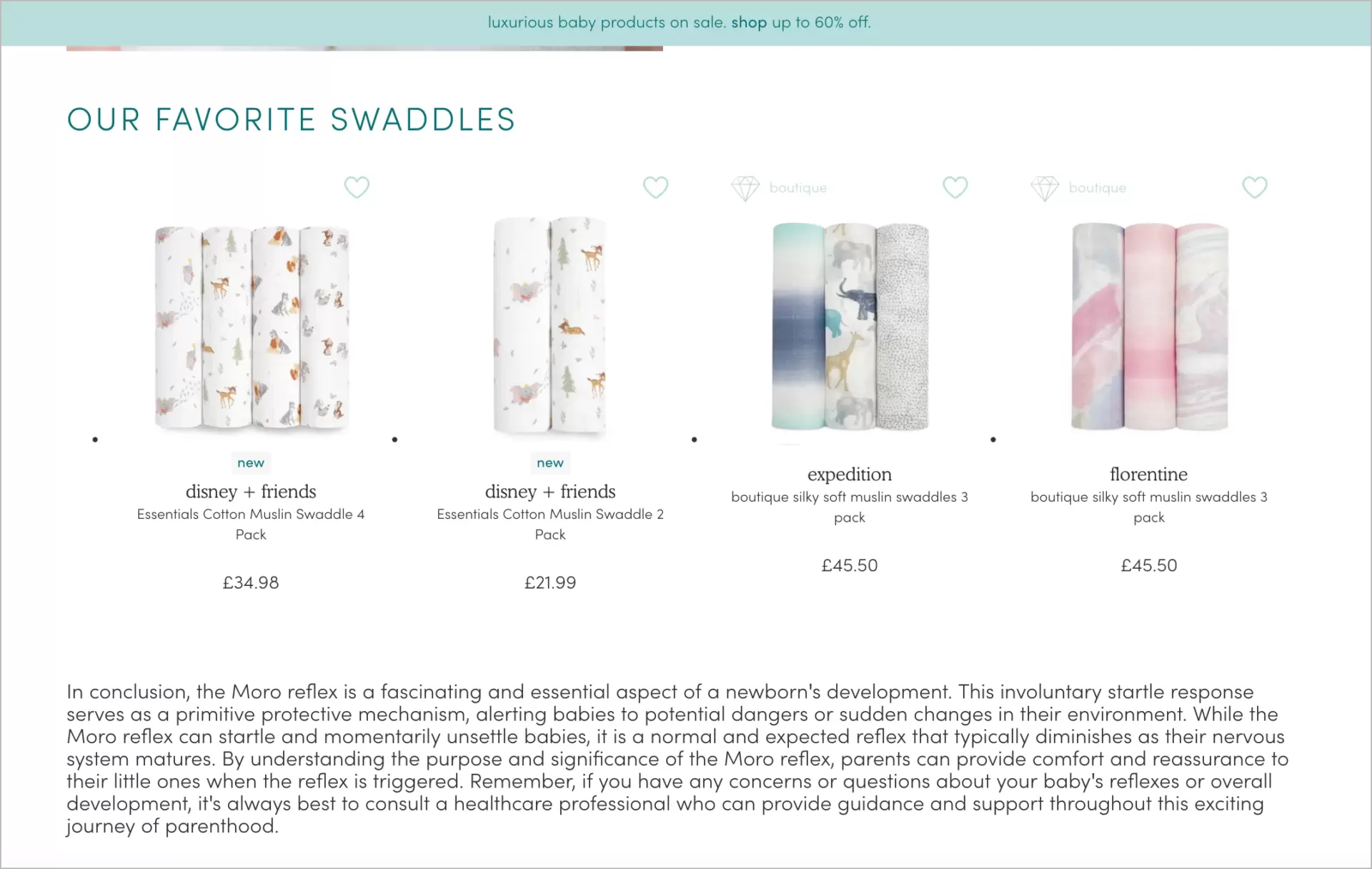
Strategic Content Refinement
The next steps concerned improving the content. Those adjustments involved:
- transition from informational content to one guiding transactional actions, resulting in more purchases,
- reviewing all the blogposts and unindexing outdated ones,
- identifying content gaps throughout the user/customer journey and creating new articles to fill them,
- changing the style of communication to be more comprehensive and engaging.
Other Tweaks
Other revisions included:
- rewriting product pages to make its content semantically relevant (read: both search-engine friendly and well-matched with users’ intents),
- restructuring the site’s navigational menu to highlight specific products and facilitate filtering,
- renaming categories and subcategories to speed up user navigation (e.g., replacing swaddles category with cotton swaddle, bamboo swaddle, organic cotton swaddle, etc.).
After implementing this approach, CR indexes started to grow.
Does Conversion Rate Affect SEO?
Conversion rate itself does not directly influence SEO rankings on search engines like Google, but may impact it in an indirect way.
High conversion rates are often a result of an optimized user experience, quality content, and a website’s overall relevance to the user’s needs. These factors are aligned with what search engines consider for good SEO. For instance, a website that loads quickly, has a low bounce rate and engages users effectively can be seen more favorably by search engines.
At the same time, websites with high CR are more likely to receive repeat visits, social shares, and backlinks, all of which can positively influence SEO.
What to Avoid While Optimizing Conversion Rates in SEO?
When optimizing conversion rates in SEO, avoid practices that harm user experience and search rankings, such as neglecting mobile optimization, overusing pop-ups, sacrificing page load speed for design elements, overusing keywords (keyword stuffing), creating misleading content or CTAs, ignoring user feedback, or giving up on A/B tests and analytics.
How to Use A/B Testing for SEO Conversion Optimization?
To use A/B testing for SEO conversion optimization, identify key elements on your website to test (like headlines or CTAs), create different versions for each element, and then measure and analyze their impact on user behavior and conversion rates using A/B testing tools like VWO or AB Tasty. This process helps in identifying the most effective elements that contribute to both improved SEO performance and higher conversion rates. You may learn how it works based on real A/B testing examples and case studies.
How can You Optimize CTA for both SEO and CRO?
To optimize Call-to-Action (CTA) buttons for both SEO and Conversion Rate Optimization (CRO), focus on clear, action-oriented language that aligns with your target keywords, make certain the CTA design is visually appealing and stands out on the page, place CTAs in strategic locations (to make it instantly visible), and, lastly, consider the overall user experience and journey on your website, ensuring that call to action is relevant and contextually appropriate for the content they accompany.
How does Bounce Rate Influence Conversion Optimization in the Context of SEO?
A high bounce rate is a red flag for both SEO and conversion optimization, as it often means that the site isn’t engaging enough to retain visitors or prompt conversions. See this as an alert and, at the same time, a clear call to initiate the conversion rate optimization process.
Create SEO-optimized Pages with Landingi
Now that you’re familiar with the importance of SEO optimization, it’s time to get some practice.
In Landingi you can not only build pages at scale with Smart Sections using over 300 fully editable templates but also make them excel in SEO, bringing to your company many valuable customers. What does the process look like? You can, for example…
- start with AI-based SEO generation,
- then create with AI Assistant copy that is engaging and relevant to your audience,
- track in detail how your users behave on your pages with EventTracker (which is a built-in Google Analytics alternative for landing pages),
- and finally, A/B test various pieces of your SEO strategy (like headlines, phrases, copy, and so on) to select the best-converting ones.
Of course, you can also use more advanced features described in this article, like programmatic SEO (a.k.a. dynamic text replacement).
Just give it a free try!


